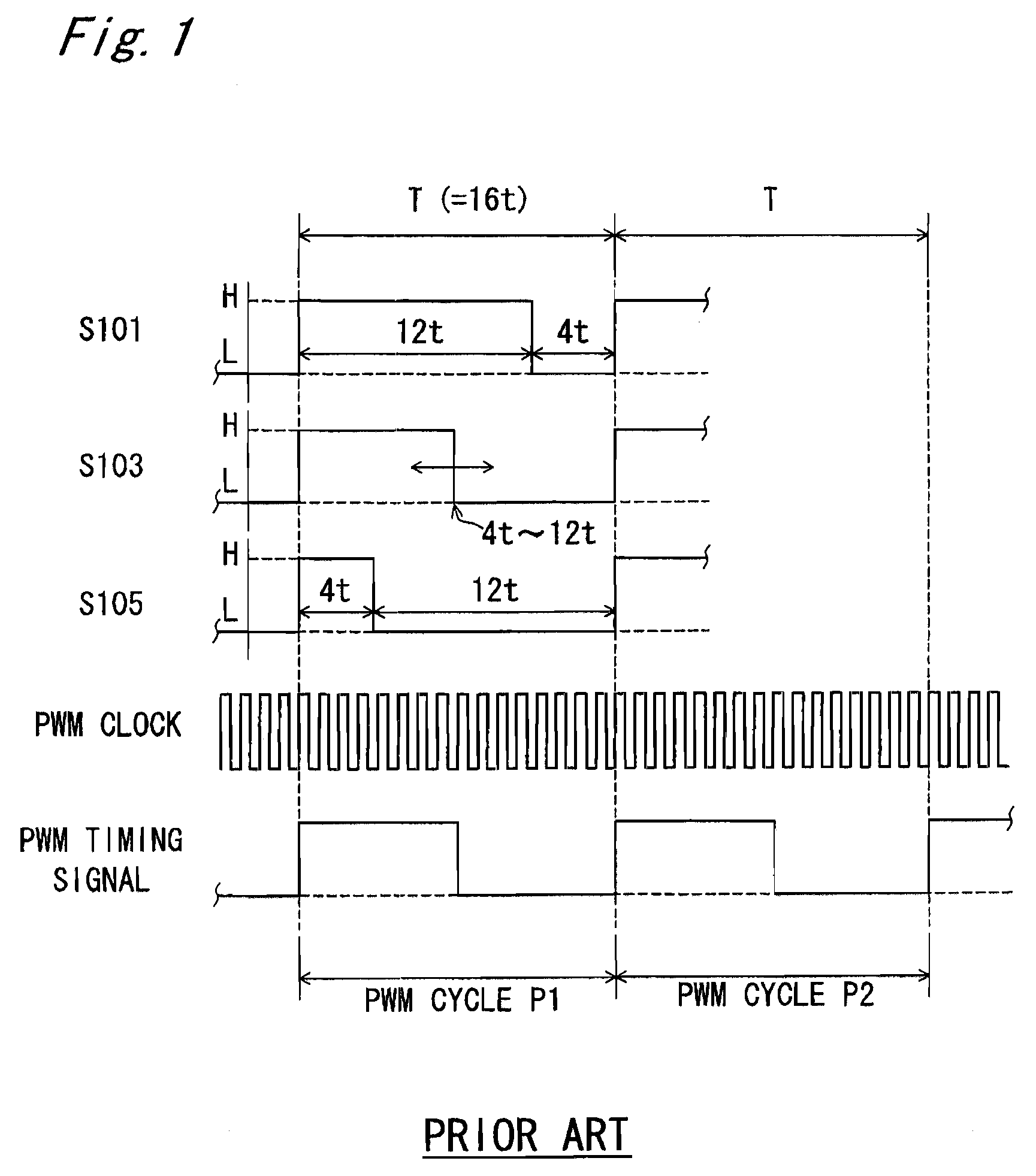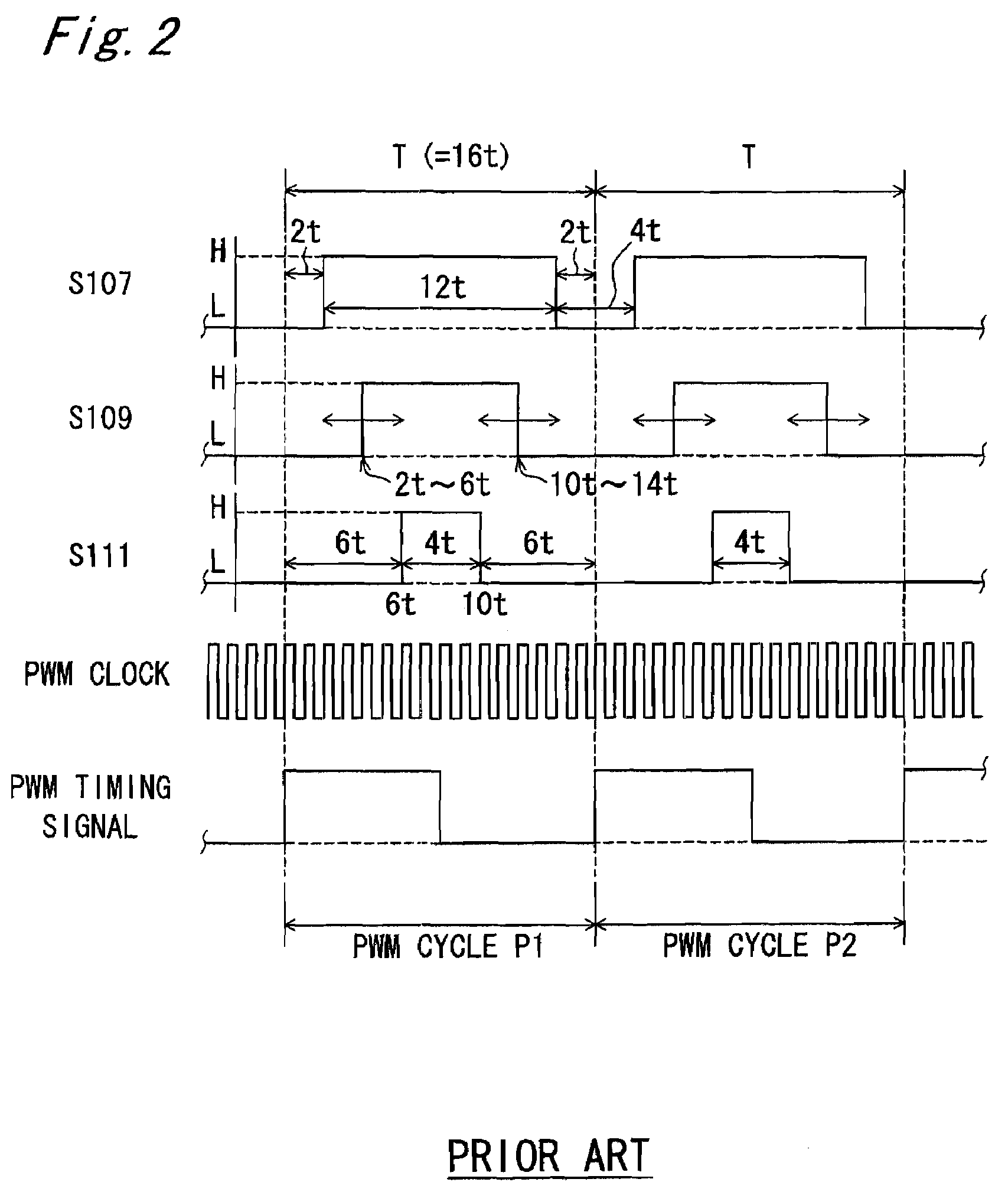Pulse width modulation method and digital analogue converter using the same
a technology of pulse width and modulation method, applied in the direction of pulse technique, digital-analog converter, instruments, etc., to achieve the effect of ensuring operation stability, expanding the dynamic range of pwm modulation, and preventing linearity deterioration
- Summary
- Abstract
- Description
- Claims
- Application Information
AI Technical Summary
Benefits of technology
Problems solved by technology
Method used
Image
Examples
first embodiment
Modification of First Embodiment
[0107]FIG. 5 is a block diagram showing an example of modification of a D / A converter 1b of the first embodiment. With reference to this figure, the modified example of the D / A converter 1b will be explained. Note that the same signs and numerals are assigned to the same constituent element as that of the D / A converter 1a, and the explanation thereof is omitted here.
[0108]The D / A converter 1b has a MASH type ΔΣ modulator 51. The MASH type ΔΣ modulator 51 includes a main loop 61, a sub-loop 23, and a differentiator 55. A significant difference from the D / A converter 1a is the point that it has a limiter 69 within the main loop 61 and before the adder 27. The limiter 69 can input the output of a delay unit 25a of the differentiator 55, and, in addition to the aforementioned operation, based on the output of the delay unit 25a further, the limiter 69 limits the output digital signal and can suitably distribute the error being occurred in the limitation t...
second embodiment
[0109]FIG. 6 is a block diagram of a digital-analogue converter (D / A converter) 1c according to a second embodiment of the present invention. The D / A converter 1c is the delta-sigma (ΔΣ) type D / A converter in the same way as the D / A converter 1a. The explanation for the same constituent element as that of the D / A converter 1a is omitted in the description about the D / A converter 1c. Also, regarding the same operation of each constituent element as that of the D / A converter 1a according to the first embodiment, the explanation thereof is simplified or omitted.
[0110]When the D / A converter 1c being compared to the D / A converter 1a according to the first embodiment, the flag generator is omitted from a PWM modulator 73 of the D / A converter 1c, and along with this omission, the input of the flag to a limiter 89 is also omitted. The D / A converter 1c according to the second embodiment corresponds to the D / A converter 1a according to the first embodiment except for the aforementioned point....
third embodiment
[0131]In the PWM modulation method according to a third embodiment, the D / A converter 1c having the same configuration as that of the second embodiment can be used. Therefore, explanation for the configuration of the D / A converter 1c according to the third embodiment is omitted. FIG. 9 shows examples (S31 to S34) of the PWM signal (pulse) being outputted by the pulse generator 73a of the PWM modulator 73 and the PWM clock being outputted by the clock signal generator 15 and the PWM timing signal. With reference to this figure, the PWM modulation according to this embodiment will be explained. In the same way as the first and second embodiments, the interval of PWM clocks is represented as t, and the interval of PWM timing signals is represented as 16t (where 16t=T, T is the PWM cycle).
[0132]In this embodiment, the section where the H level as the first level is outputted and the section where the L level as the second level is outputted are limited so as to have the section width of...
PUM
 Login to View More
Login to View More Abstract
Description
Claims
Application Information
 Login to View More
Login to View More - R&D
- Intellectual Property
- Life Sciences
- Materials
- Tech Scout
- Unparalleled Data Quality
- Higher Quality Content
- 60% Fewer Hallucinations
Browse by: Latest US Patents, China's latest patents, Technical Efficacy Thesaurus, Application Domain, Technology Topic, Popular Technical Reports.
© 2025 PatSnap. All rights reserved.Legal|Privacy policy|Modern Slavery Act Transparency Statement|Sitemap|About US| Contact US: help@patsnap.com



